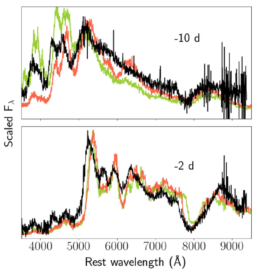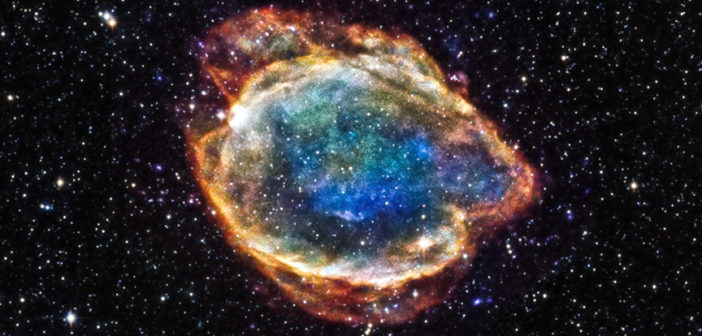There’s more than just one way for a star to explode. Supernovae — perhaps the most dramatic form of star death — come in many flavors, and astronomers are still learning about the vast diversity of these stellar explosions.
When Stars Steal Mass

This artist’s rendering depicts one kind of Type Ia supernova mechanism: the singly degenerate model, in which a white dwarf siphons mass from its companion, exceeds the Chandrasekhar mass, and explodes. [NASA/CXC/M. Weiss]
However, this isn’t the only way a Type Ia supernova can happen. In the double-detonation model, the explosion of the white dwarf is triggered by the ignition of an accreted helium shell. In this case, the white dwarf can be far less massive than the Chandrasekhar limit, leading to unexpectedly dim explosions.
Past studies have explored the minimum helium shell mass necessary (~0.01 solar mass) for this process and found that helium-shell detonations can efficiently cause core detonations, but there’s still plenty we don’t know about these events. The best way to learn about supernovae — double-detonation or otherwise — is to spot them soon after they happen.

A comparison of ZTF 18aaqeasu’s optical light curve (red circles) to normal (orange hexagons) and sub-luminous Type Ia supernovae. [Adapted from De et al. 2019]
A Survey Spies a Supernova
In May 2018, an unusual supernova was detected by the Zwicky Transient Facility, an optical survey that hunts for fleeting events like stellar flares, fast-rotating asteroids, and the visible-light counterparts of gravitational-wave events. Within days of its detection, a team led by Kishalay De (Caltech) began to collect photometric observations and spectra of the object.
The photometry revealed that the object, ZTF 18aaqeasu, was unusually red and less luminous than a typical Type Ia supernova, making it a good candidate for the double-detonation scenario.
Its spectra were unusual even for a sub-luminous supernova, taking much longer to develop the silicon absorption feature typically seen in this type of event. Even stranger, the spectra exhibited a never-before-seen cutoff in the flux at short wavelengths, likely due to the presence of metals like iron and titanium.

Comparison of observed spectra (black) to helium-shell double-detonation models (green and orange). [Adapted from De et al. 2019]
An Unusual Event
In order to derive the properties of ZTF 18aaqeasu, De and collaborators compared their photometric and spectroscopic data to models, finding that the event was likely caused by the ignition of a 0.15 solar mass helium shell, which led to the explosion of a 0.76 solar mass white dwarf.
The combination of a massive helium shell with a low-mass white dwarf makes ZTF 18aaqeasu unique among Type Ia supernovae; SN 2016jhr (one of the only supernovae previously linked to a helium-shell detonation event) featured a much more massive white dwarf with a less massive helium shell.
Can we expect to find more supernovae like ZTF 18aaqeasu? Similarly luminous supernovae should be detectable out to about 1.3 billion light-years, but so far there have been none reported with similar spectral features and unusually red color. This may indicate that double-detonation events featuring massive helium shells might be rare — adding an elusive new member to the Type Ia supernova family.
Citation
“ZTF 18aaqeasu (SN2018byg): A Massive Helium-shell Double Detonation on a Sub-Chandrasekhar-mass White Dwarf,” Kishalay De et al 2019 ApJL 873 L18. doi:10.3847/2041-8213/ab0aec

1 Comment
Pingback: AAS Nova – New